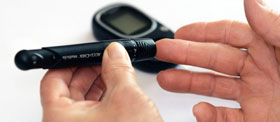New beamlines making progress
During the last months the construction of new beamlines at the ALBA Synchrotron has made progress. In LOREA, devoted to angle resolved photoemission spectroscopy, the control hutch has been completed, as well as the cable trays. NOTOS - that will perform X-ray absorption and diffraction experiments - has already done most of the installation of both optical and experimental hutches. During the next shutdown, planned at the end of May, the construction of the optical hutch of XAIRA - the microfocus beamline for macromolecular crystallography - will also begin.
|
Workshop for the polymers industry
On 31 May 2019, the ALBA Synchrotron is organising a workshop for companies of the polymers industry (plastics, adhesives, textiles, coatings, packaging, biomedicine, 3D printing materials, etc.) to discuss how the properties of these materials can be improved with the use of the ALBA synchrotron light experimental techniques.
|
More than 7.000 primary school students at Misión ALBA
The first edition of this educational project, aimed at girls and boys between 10 and 12 years old, has counted with the participation of more than 170 schools throughout Spain. The young students have successfully solved the scientific challenges proposed by the ALBA staff.
|
|
The European Strategy for Particle Physics was discussed in Granada
During the 13-16 of May, the city of Granada hosted more than 600 researchers at the Open Symposium to decide the future of the high energy physics research in the next decades. The event was organised by several institutions, among them the ALBA Synchrotron. The symposium will be now followed up with the compilation of a “briefing book” and with a Strategy Drafting Session, which will take place in Bad Honnef, Germany, from 20 to 24 January 2020. The update of the European Strategy for Particle Physics is due to be completed and approved by the CERN Council in May 2020.
|
A new study from ALBA explains why some diabetes discontinued drugs don't work
BL13-XALOC
Synchrotron light has been used for the first time to simulate damages due to oxidative stress on the aldose reductase protein with the aim of obtaining its activated form. This form of the protein, related with some several diabetic complications, is insensitive to the drugs being developed, which hinders the treatment. ALBA researchers have shown that chemical changes suffered by the protein under oxidative stress are the cause of some drugs inefficacy in the attempt to block aldose reductase. The ALBA team also suggests a new method for drugs design.

Improving the synthesis of alternative cathode materials for the next-generation of lithium-ion batteries
BL04-MSPD & BL22-CLAESS
An international group of researchers has unveiled the transformation processes that take place during synthesis of lithium-rich layered oxides that are used as cathode materials in lithium-ion batteries. These low-cost materials showed very high capacity and speed, becoming promising candidates for the development of the electric vehicles and energy storage systems. Using synchrotron light, researchers were able to determine structural and chemical changes during the synthesis of these materials.
|
Salt, a new facilitator of graphene-based electronic devices
BL24-CIRCE
Researchers have shown that an everyday substance such as salt can be used to protect graphene layers and decouple them from a metallic substrate. It can then be easily removed in order to recover an intact graphene layer, turning this affordable ingredient into an enabler of a high-performing material. The experimental work, published in the journal 2D Materials, was carried out at the ALBA Synchrotron, working with the PEEM microscope, which was used both for the dissociation process and to characterize the sample.

Coherent scattering imaging of skyrmions under high applied magnetic fields and low temperatures
BL29-BOREAS
Profiting from the coherence of synchrotron light, scientists have performed both reciprocal and real-space observations of magnetic skyrmion lattice deformation in a chiral magnet Co8Zn8Mn4. The study of these materials is key for developing future spintronic applications such as racetrack memory and logic devices.
|
|
-
20-21 June 2019 -
28th Meeting of the Scientific Advisory Committee (SAC) of the ALBA Synchrotron
-
-
ALBA is the synchrotron light source in Spain. It is a complex of electron accelerators to produce synchrotron light, which allows visualization and analysis of matter and its properties at atomic and molecular levels. In operation since 2012, ALBA has eight beamlines and four more under construction. It generates about 6,000 hours of beamtime and hosts more than 2,000 academic and industrial researchers every year.


You are receiving this e-mail because you are registered in our database. The processing of personal data collected is subject to the provisions of Regulation (EU) 2016/679 of the European Parliament and of the Council of 27 April 2016 on the protection of natural persons with regard to the processing of personal data and on the free movement of such data, and other applicable regulations. The data required will be the minimum necessary and will be supported by the legal basis (legitimation) and purpose indicated in each of the corresponding disclaimers; its processing will be carried out in accordance with the specific procedures designed by CELLS based on the risk analysis and security measures applicable to them, which are included in the corresponding Register of Activities.
The controller of personal data is the CELLS Direction and the Data Protection Officer is the person who exercises the Deputy Direction of CELLS. Data subjects may request the access to their data, as well as their rectification, erasure, portability and the restriction and object to processing such data, by writing to the Data Protection Officer via e-mail dpd@cells.es or, to the postal address Carrer de la Llum, 2-26. 08290, Cerdanyola del Vallès, indicating "Ref. Data protection".
|
| |